Share
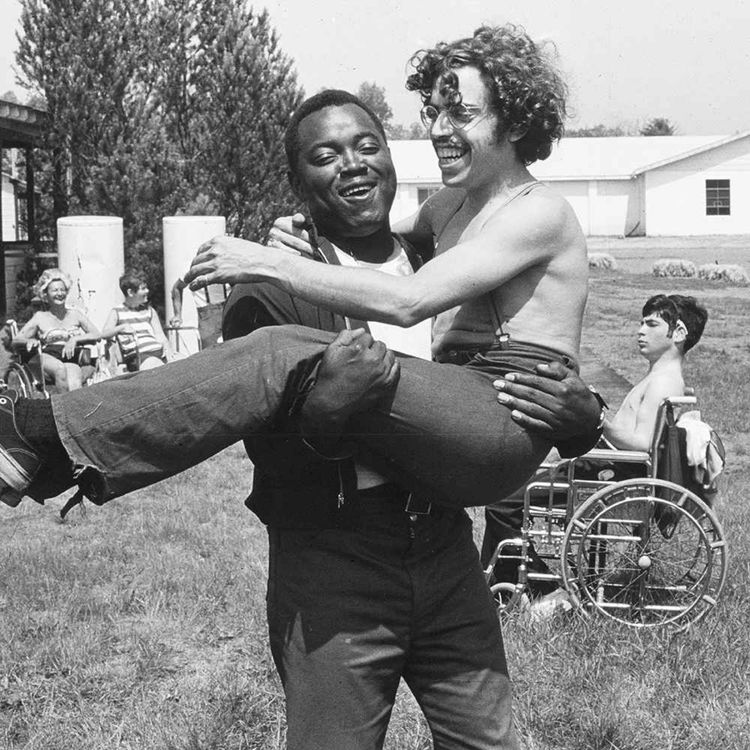
Berkeley Voices
113: Funky and free-spirited: How a 1970s summer camp started a disability revolution
It was summertime in the early 1970s in New York City. Fifteen-year-old Jim LeBrecht boarded a school bus headed for the Catskill Mountains, home to Camp Jened, a summer camp for people with disabilities. As the bus approached the camp, he peered out the window at the warm and raucous group below.
"I wasn't exactly sure who was a camper and who was a counselor," he said. "I think that's really indicative of one of the many things that made that camp special."
Over several years, the camp changed him in profound ways.
"I, for the first time, understood that I didn’t need to be embarrassed about being disabled, that I could have pride in who I was," he said. "And that it was possible to fight back against the system that was keeping us down."
Nearly five decades later, in 2020, LeBrecht and filmmaker Nicole Newnham released on Netflix the documentary Crip Camp: A Disability Revolution, about Camp Jened and the activism it inspired.
"What did we used to say, it was like Wet Hot American Summer meets The Times of Harvey Milk?" said Newnham. "It’s an activist history story. It’s the origin story of a political and identity-based community, the disability community. But it’s also a coming-of-age story and a joyous sort of celebration of youth and disability culture coming together."
All incoming undergraduate students at UC Berkeley watched Crip Camp over the summer as part of On the Same Page, a program of the College of Letters and Science.
"We had a couple of goals with our film," said LeBrecht. "One of them was to reframe what disability meant to people with and without disabilities. We also wanted to start conversations. I hope that this plants a seed within all of these students that they do talk, they do think differently, and that this is something they hold for the rest of their lives that will make the world a better place."
Photo by Steve Honigsbaum/Netflix.
Listen to the episode, read the transcript and see photos on UC Berkeley News (news.berkeley.edu/podcasts): https://news.berkeley.edu/2023/09/05/crip-camp-on-the-same-page
More episodes
View all episodes
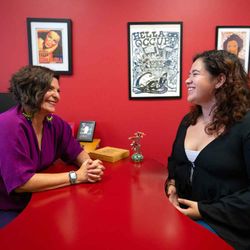
2. Wikipedia as resistance
12:50||Season 2, Ep. 2After Wikipedia made its debut in 2001, some trends quickly emerged. Most editors were male, topics tended to skew toward geek culture interests like computing and gaming, and only a small fraction of biographies were about women. More than two decades later, biases and knowledge gaps on Wikipedia of all sorts remain, especially for marginalized communities. But a UC Berkeley professor and her students are working to change that.Since 2016, ethnic studies professor Juana María Rodríguez has partnered with Wiki Education to teach a range of courses in which students create and edit Wikipedia articles about the contributions of LGBTQ people, especially queer and trans people of color. “Wikipedia is a public-facing project — it’s the largest encyclopedia in the world,” says Rodríguez. “In a political moment where these histories are actively being erased from public view, having students work on a platform like Wikipedia becomes even more important.”This is the second episode of a new Berkeley Voices season, featuring UC Berkeley scholars working on life-changing research and the people whose lives are changed by it.Listen to the episode and read the transcript on UC Berkeley News (news.berkeley.edu/podcasts/berkeley-voices).Music by Blue Dot Sessions.UC Berkeley photo by Brandon Sánchez Mejia.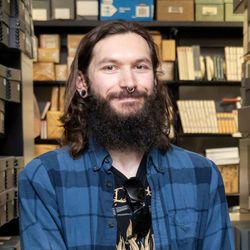
1. How a Pomo elder's recordings are helping this student reclaim his culture
23:04||Season 2, Ep. 1Tyler Lee-Wynant grew up hearing stories about his great-great aunt, Edna Campbell Guerrero. Born in 1907 in Mendocino County, she was a native speaker of Northern Pomo, one of seven languages spoken by the Pomo people who are Indigenous to Northern California. “She was a no-nonsense person,” says Lee-Wynant, a UC Berkeley Ph.D. student in linguistics. “She was an amazing individual. She cared so deeply about passing on what she knew.”For more than 50 years, Guerrero worked with Berkeley linguists to document her language and culture. These recordings are part of the campus’s California Language Archive. In them, she tells stories, describes cultural practices, says vocabulary and conjugates verbs. Whenever Lee-Wynant hears his aunt’s voice, strong and determined, he knows it’s his responsibility to carry on her work. As a graduate student researcher for the archive, Lee-Wynant is cataloging and analyzing a new collection that includes hours of recordings of his aunt, among other materials. “It's such a trove of information about ... my family's history,” he said. “I always get the chills whenever I listen to it because you never know what story is gonna come up.”In this episode of Berkeley Voices, Lee-Wynant shares how his aunt's recordings have opened a portal to his family’s history and led him to teach their language to new generations.And in this UC Berkeley News companion piece, learn more about the linguist who created the archive's newly acquired collection, her lifetime of research with Indigenous communities and how her collection of tapes and notebooks found their way to the archive. This is the first episode of a new Berkeley Voices season, featuring UC Berkeley scholars working on life-changing research and the people whose lives are changed by it. New episodes come out on the first Thursday of every month, from November through April.Listen to the episode and read the transcript on UC Berkeley News (news.berkeley.edu/podcasts/berkeley-voices).Music by Blue Dot Sessions.UC Berkeley photo by Brittany Hosea-Small.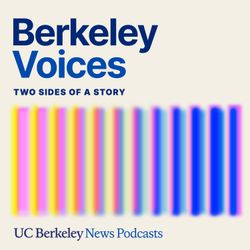
New season: Two sides of a story
01:53|There’s so much incredible research and work that happens every day at UC Berkeley, on everything from artificial intelligence and quantum computing to linguistics and the study of social justice. It holds the record for the most Nobel Prize winners among any public university in the world, with two wins just this year.This work can be highly theoretical and technical, taking decades to fully develop. Yet its impact extends far beyond academia, leading to world-changing results, from the invention of CRISPR gene editing that has saved lives to ethnic studies courses that foster a stronger sense of identity and critical consciousness. Within these broad impacts are millions of stories of how Berkeley’s research has transformed society. In this season of Berkeley Voices, we hear two sides of a story — from Berkeley scholars working on life-changing research, and from the people who’ve been changed by it.New episodes will come out on the first Thursday of each month, from November through April. Listen to Berkeley Voices on your favorite podcast app or on YouTube @BerkeleyNews. You can find all of our podcast episodes, with transcripts and photos, on UC Berkeley News at news.berkeley.edu/podcasts.Listen to the episode and read the transcript on UC Berkeley News (news.berkeley.edu/podcasts/berkeley-voices).Music by Blue Dot Sessions.UC Berkeley design by Neil Freese.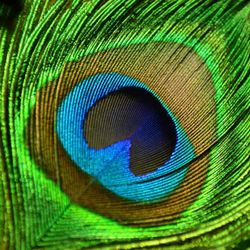
8. How new color 'olo' stretches the limits of human perception
18:38||Season 1, Ep. 8Last month, UC Berkeley researchers published a study about how they tricked the eye into seeing a new color. It was a highly saturated teal, a peacock green, the greenest of all greens. The scientists produced this color, which they named “olo,” by shining a laser into the eye and stimulating one type of color-sensitive photoreceptor cells called cones. Austin Roorda, a professor of optometry and vision science at Berkeley’s School of Optometry, developed the optical imaging platform they used in this project. It’s called Oz, after the story The Wonderful Wizard of Oz. In the 1939 film adaptation, the lead character, Dorothy, goes from her black-and-white farm in Kansas to the color world of Oz.“Ozvision is really directly tied to the book and to the movie where the Emerald City is this unearthly green color,” said Roorda. “The intent and the aspiration was to elicit that same kind of response by going from a natural-colored world to a supernatural-colored world by a direct stimulation of these cones.” It has enormous potential, he said, to transform how we understand and treat eye diseases, and to expand the way we see the world around us.Listen to the episode and read the transcript on UC Berkeley News (news.berkeley.edu/podcasts).Music by Blue Dot Sessions.Photo via Unsplash+This is the last episode of our Berkeley Voices series on transformation. In eight episodes, we have looked at how transformation — of ideas, of research, of perspective — shows up in the work that happens every day at UC Berkeley. We'll be back with a new series in the fall.See all episodes of the series.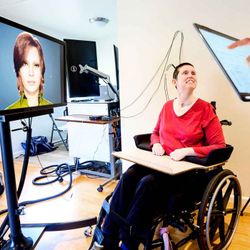
7. AI helped this paralyzed woman speak again after 18 years
17:04||Season 1, Ep. 7When Ann Johnson had a rare brainstem stroke at age 30, she lost control of all of her muscles. One minute, she was playing volleyball with her friends. The next, she couldn’t move or speak. Up until that moment, she’d been a talkative and outgoing person. She taught math and physical education, and coached volleyball and basketball at a high school in Saskatchewan, Canada. She’d just had a baby a year earlier with her new husband. And the thing is, she still was that person. It's just that no one could tell. Because the connection between her brain and her body didn’t work anymore. She would try to speak, but her mouth wouldn’t move. Eighteen years later, she finally heard her voice again.It's thanks to researchers at UC Berkeley and UC San Francisco who are working to restore people’s ability to communicate using a brain-computer interface. The technology, the researchers say, has enormous potential to make the workforce and the world more accessible to people like Ann. Listen to the episode and read the transcript on UC Berkeley News (news.berkeley.edu/podcasts). There, you can also watch a video about Ann and the research team.Music by Blue Dot Sessions.Photo by Noah Berger, 2023.This year on Berkeley Voices, we’re exploring the theme of transformation. In eight episodes, we explore how transformation — of ideas, of research, of perspective — shows up in the work that happens every day at UC Berkeley. New episodes come out on the last Monday of each month, from October through May.See all episodes of the series.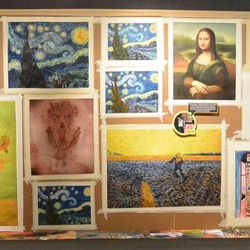
6. Fakes, replicas and forgeries: What counts as art?
23:42||Season 1, Ep. 6When Winnie Wong first saw Dafen Oil Painting Village in 2006, it was nothing like she’d imagined. The Chinese village was known for mass producing copies of Western art. She’d read about it in The New York Times, which described a kind of compound where thousands of artists painted replicas of famous artworks, like da Vinci’s Mona Lisa or van Gogh’s Starry Night, for European and U.S. hotels and condos.“We had an expectation, which was that there would be this giant factory,” said Wong, a professor of rhetoric at UC Berkeley. “And in this factory, there would be these painters working in an assembly line fashion: One person would paint the rocks, and one person would paint the trees, and one person would paint the sky.”But when she arrived in the small gated village, what she saw surprised her. In 2013, she published van Gogh on Demand: China and the Readymade, a book about her six years of research in Dafen and how it forever changed the way she thinks about art and authenticity and the nature of creativity.See more artwork and photos of Dafen from 2015, when Wong and architecture professor Margaret Crawford took a group of graduate students on a 14-day trip to the Pearl River Delta region to study urban art villages.Listen to the episode, read the transcript and see more photos on UC Berkeley News (news.berkeley.edu/podcasts).Music by Blue Dot Sessions.Photo by José Joaquin Figueroa.This year on Berkeley Voices, we're exploring the theme of transformation. In eight episodes, we explore how transformation — of ideas, of research, of perspective — shows up in the work that happens every day at UC Berkeley. New episodes come out on the last Monday of each month, from October through May.See all episodes of the series.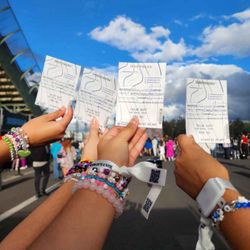
5. An evolution of American friendship, from Victorian-era letters to Swiftie bracelets
14:40||Season 1, Ep. 5Have you ever seen letters from the 1800s? Aside from the pristine penmanship and grammar, the way friends expressed their fondness for each other is remarkable.“Letters sent between friends are often full of the kinds of loving and affectionate language that today we would only associate with romantic or sexual relationships: ‘My darling,’ ‘I love you,’ ‘I can't wait to be near you,’” said UC Berkeley historian Sarah Gold McBride, who in 2022 created the course, Friendship in America, with Berkeley anthropologist Christine Palmer. Throughout history, with changes in cultural norms and communication technology, the ways we stay connected to each other has also changed, and not always for the better. While social media can make it easier to find people with similar interests, it can also make it easier to forget what it takes to build and keep meaningful relationships. Gold McBride and Palmer hope their class will inspire students to draw from the past and approach their friendships with the intentionality they require.This is the fifth episode of our eight-part series on transformation. In eight episodes, we’re exploring how transformation — of ideas, of research, of perspective — shows up in the work that happens every day at UC Berkeley. New episodes of the series come out on the last Monday of each month. See all episodes of the series.Key takeaways:Gender norms, throughout U.S. history to the modern day, influence the kinds of friendships we make and how we express affection for each other.As our dominant modes of communication shift, how we conceive of friendship evolves, too.By investigating friendship in a deeper way, we can better understand the role of friendship in our lives and become more intentional in how we make and maintain our connections.Read the transcript, listen to episode and see photos on UC Berkeley News (news.berkeley.edu/podcasts).Find us on YouTube@BerkeleyNews.Music by Blue Dot Sessions.Photo by Sarah.rdguezz via Wikimedia Commons.
4. How fear is being weaponized against you (and how to respond)
22:33||Season 1, Ep. 4Against her mom’s warnings, UC Berkeley political scientist Marika Landau-Wells watched Arachnaphobia as a kid. Ever since, she has been terrified of spiders. But over the years, she has learned to reason with her quick fear response — No, that spider is not 8 feet in diameter — and calmly trap them and put them outside.We all encounter problems like this, she says, where we have quick reactions to things we’ve learned to fear. It might be something that is actually dangerous that we really should quickly react to, but it could also be a tiny, non-threatening spider. Each time, we have to decide what kind of problem it is and then how to respond. She says this task is especially hard today because we're inundated with messages trying to hijack our fear response, from junky online ads to the way politicians speak.Landau-Wells studies how we make these kinds of decisions, and what influences how we act, especially in situations where there’s a lot on the line.This is the fourth episode of our eight-part series on transformation. In eight episodes, we’re exploring how transformation — of ideas, of research, of perspective — shows up in the work that happens every day at UC Berkeley. New episodes of the series come out on the last Monday of each month. See all episodes of the series.Key takeaways:We learn what to be afraid of; once we fear something, it’s hard to change our perception.We’re bombarded with messaging trying to hijack our quick fear responses.Research on how the brain processes fear could help us persuade people to see dangers differently and influence how world leaders make decisions.Listen to the episode and read the transcript on UC Berkeley News (news.berkeley.edu/podcasts).Music by Blue Dot Sessions.Image by Sara Oliveira/Unsplash+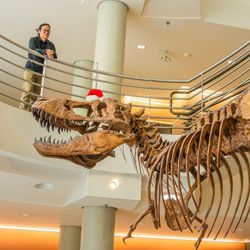
3. Think you know what dinosaurs were like? Think again.
18:09||Season 1, Ep. 3For UC Berkeley Professor Jack Tseng, the world of paleontology never gets old. With each new discovery, paleontologists like him learn more about the animals that walked the earth millions of years ago."If you look at books from 50 years ago, they postured dinosaurs very differently from the way we do it today," Tseng says. "This constant profusion of new scientific knowledge into the popular psyche is recorded in children's books, which is a lovely way to see how this science has progressed."Fossils also hold valuable clues about our planet's future and our role within it as we experience climate change, he says."The questions we ask of them have to do with how different species sometimes survive, when others go extinct. Paleontology is sort of pre-adapted to plug in to understanding the future of Earth because we have billions of years of the fossil record to learn from."This season on Berkeley Voices, we’re exploring the theme of transformation. In eight episodes, we’re exploring how transformation — of ideas, of research, of perspective — shows up in the work that happens every day at UC Berkeley. New episodes will come out on the last Monday of each month, from October through May. See all episodes of the series.Key takeaways: Paleontologists can better understand how dinosaurs and other prehistoric animals looked and lived by studying living animals.New discoveries have reshaped what we thought we knew about dinosaurs and the prehistoric world.Fossils hold clues about the role of different species of plants and animals during climate change — and the future of Earth.Listen to the podcast and read the transcript on UC Berkeley News (news.berkeley.edu/podcasts).Music by Blue Dot Sessions.UC Berkeley photo by Stanley Luo.